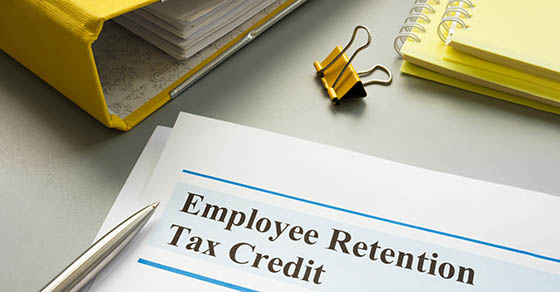3 ways your business can uncover cost cuts
- ByPolk & Associates
- Jan, 25, 2023
- All News & Information
- Comments Off on 3 ways your business can uncover cost cuts
Every business wants to find clear and substantial ways to cut costs, but it’s usually not easy. Obvious places to slash expenses, such as labor and overhead, often aren’t a viable option. Here are three ideas to consider: 1) Identify your top suppliers and determine whether you can consolidate spending with them to put yourself in a stronger position to negotiate volume discounts. 2) Explore environmentally friendly actions that can save you money; for example, selling off unneeded equipment or upgrading building energy systems. 3) Look at the feasibility of outsourcing and tech upgrades; though these entail initial costs, they could lower expenses in the long run. Contact us for help.
Why you might want to file early and answers to other tax season questions
- ByPolk & Associates
- Jan, 25, 2023
- All News & Information
- Comments Off on Why you might want to file early and answers to other tax season questions
The IRS opened the 2023 individual income tax return filing season on Jan. 23. Even if you usually don’t file until closer to the mid-April deadline (or you file an extension), you may want to file early. It can potentially protect you from tax identity theft. In these scams, a thief uses another person’s personal information to file a fraudulent return early in the filing season and claim a bogus refund. Another benefit of early filing is that if you’re getting a refund, you’ll get it sooner. This year, the filing deadline to submit 2022 returns, file an extension and pay tax owed is April 18 for most taxpayers. If you’re requesting an extension, you’ll have until Oct. 16 to file.
Tax-saving ways to help pay for college — once your child starts attending
- ByPolk & Associates
- Jan, 25, 2023
- All News & Information
- Comments Off on Tax-saving ways to help pay for college — once your child starts attending
If you have a child or grandchild in college, there are tax breaks you may be able to claim after the child begins attending. For example, you can take the American Opportunity Tax Credit of up to $2,500 per student for the first four years of college, a 100% credit for the first $2,000 in tuition, fees, and books, and a 25% credit for the second $2,000. You can take a Lifetime Learning Credit of up to $2,000 per family for every additional year of college or graduate school — a 20% credit for up to $10,000 in tuition and fees. Both credits are phased out for married joint filers with modified adjusted gross income between $160,000 and $180,000, and for singles between $80,000 and $90,000.
Is now the time for your small business to launch a retirement plan?
- ByPolk & Associates
- Jan, 25, 2023
- Uncategorized
- Comments Off on Is now the time for your small business to launch a retirement plan?
Is it time for your small business to offer a retirement plan? The federal government is offering incentives for you to do so. The SECURE 2.0 Act, recently signed into law, enhances the small employer pension plan start-up cost tax credit. SECURE 2.0 makes the credit equal to the full amount of creditable plan start-up costs for employers with 50 or fewer employees, up to an annual cap. The previous 50% cost limit still applies to employers with 51 to 100 employees. Also, certain employer contributions for a plan’s first five years now may qualify for the credit, and the act fixes a technical glitch related to multiemployer plans. Contact us for more info.
Commercial Clean Vehicle Credit
- ByPolk & Associates
- Jan, 24, 2023
- Uncategorized
- Comments Off on Commercial Clean Vehicle Credit
For Businesses and tax-exempt organizations looking to purchase new commercial clean vehicles in 2023, you may qualify for the New Commercial Clean Vehicle Credit The credit is offered to Businesses and Tax-exempt organizations There is no limit to the number of credits used by the business The credit is non-refundable The credit can be carried […]
Secure 2.0 Update
- ByPolk & Associates
- Jan, 17, 2023
- All News & Information
- Comments Off on Secure 2.0 Update
SECURE 2.0 is an expansion of the SECURE Act of 2019. Its purpose is to improve retirement laws on saving accounts and increase retirement planning for Americans of all ages and all stages. While the Act was signed into law on December 29, 2022, the changes that will reflect vary over the coming years but […]
How the new SECURE 2.0 law may affect your business
- ByPolk & Associates
- Jan, 17, 2023
- All News & Information
- Comments Off on How the new SECURE 2.0 law may affect your business
If your small business has a retirement plan, and even if it doesn’t, you may see changes and benefits from a new law. Provisions in the SECURE 2.0 law will kick in over several years. For example, 401(k) plans will be required to automatically enroll employees when they become eligible, beginning with plan years after December 31, 2024. Employees will be permitted to opt out. Also in the new law are better retirement coverage for part-time workers; higher catch-up contribution limits for some 401(k) participants; provisions for small businesses with no retirement plan and much more. Contact us if you have any questions about how the new law affects your situation.
Getting into data analytics without breaking the bank
- ByPolk & Associates
- Jan, 17, 2023
- All News & Information
- Comments Off on Getting into data analytics without breaking the bank
Data analytics is the science of collecting and analyzing sets of data. When done right, it can shed light on what could help or hinder a business in fulfilling its strategic objectives or improving its performance in a cost-efficient way. For example, data analytics could enable you to narrow down who your most potentially valuable customers are, or it could help you decide whether to obtain outside financing (and, if so, how much). But it’s hardly a simple process. You’ll need to identify your company’s informational needs, choose appropriate metrics and then carefully invest in the right software. Contact us for help deciding whether data analytics would likely pay off for you.
Tax-wise ways to save for college
- ByPolk & Associates
- Jan, 17, 2023
- All News & Information
- Comments Off on Tax-wise ways to save for college
If you’re a parent with college-bound children, you may want to save for future college costs. There may be tax-favored ways to save. For example, 529 plans allow you to make contributions to an account set up to meet a child’s education expenses. Contributions aren’t deductible and are treated as taxable gifts to the child. But they’re eligible for the $17,000 annual gift tax exclusion in 2023. A donor who contributes more than the annual exclusion limit for the year can elect to treat the gift as if it were spread out over a 5-year period. Distributions of earnings that aren’t used for qualified expenses are subject to income tax plus a 10% penalty. Other rules apply.
Employers should be wary of ERC claims that are too good to be true
- ByPolk & Associates
- Jan, 17, 2023
- All News & Information
- Comments Off on Employers should be wary of ERC claims that are too good to be true
The Employee Retention Credit (ERC) was a valuable tax credit that helped employers that kept workers on staff during the height of the COVID-19 pandemic. While the credit is no longer available, eligible employers that haven’t yet claimed it might still be able to do so by filing amended payroll returns for tax years 2020 and 2021. However, the IRS is warning employers to beware of third parties that may be advising them to claim the ERC when they don’t qualify. Some third-party “ERC mills” often charge large upfront fees or a fee that’s contingent on the amount of the refund. If you didn’t claim the ERC, and believe you’re eligible, contact us. We can advise you on how to proceed.










You must be logged in to post a comment.